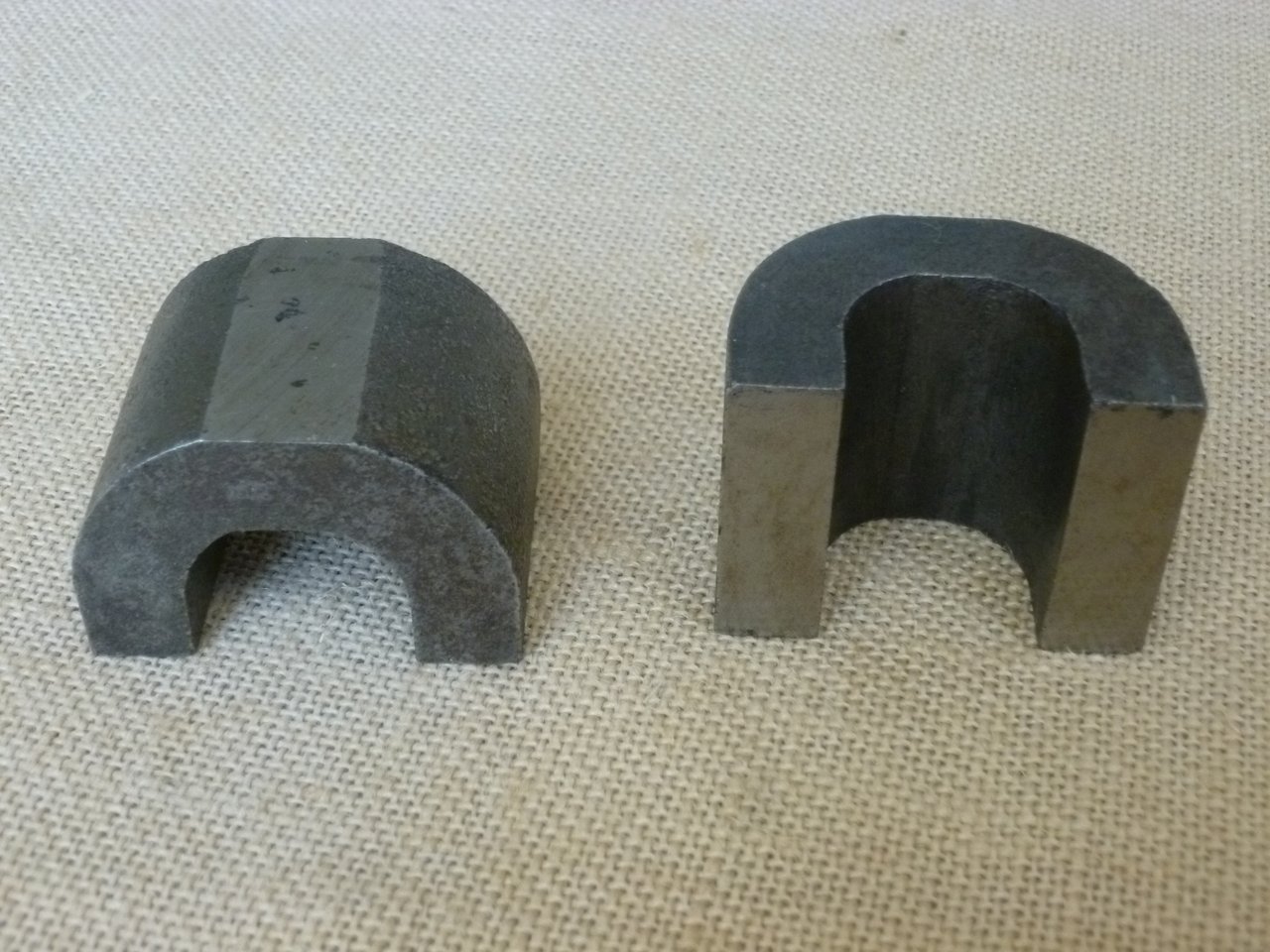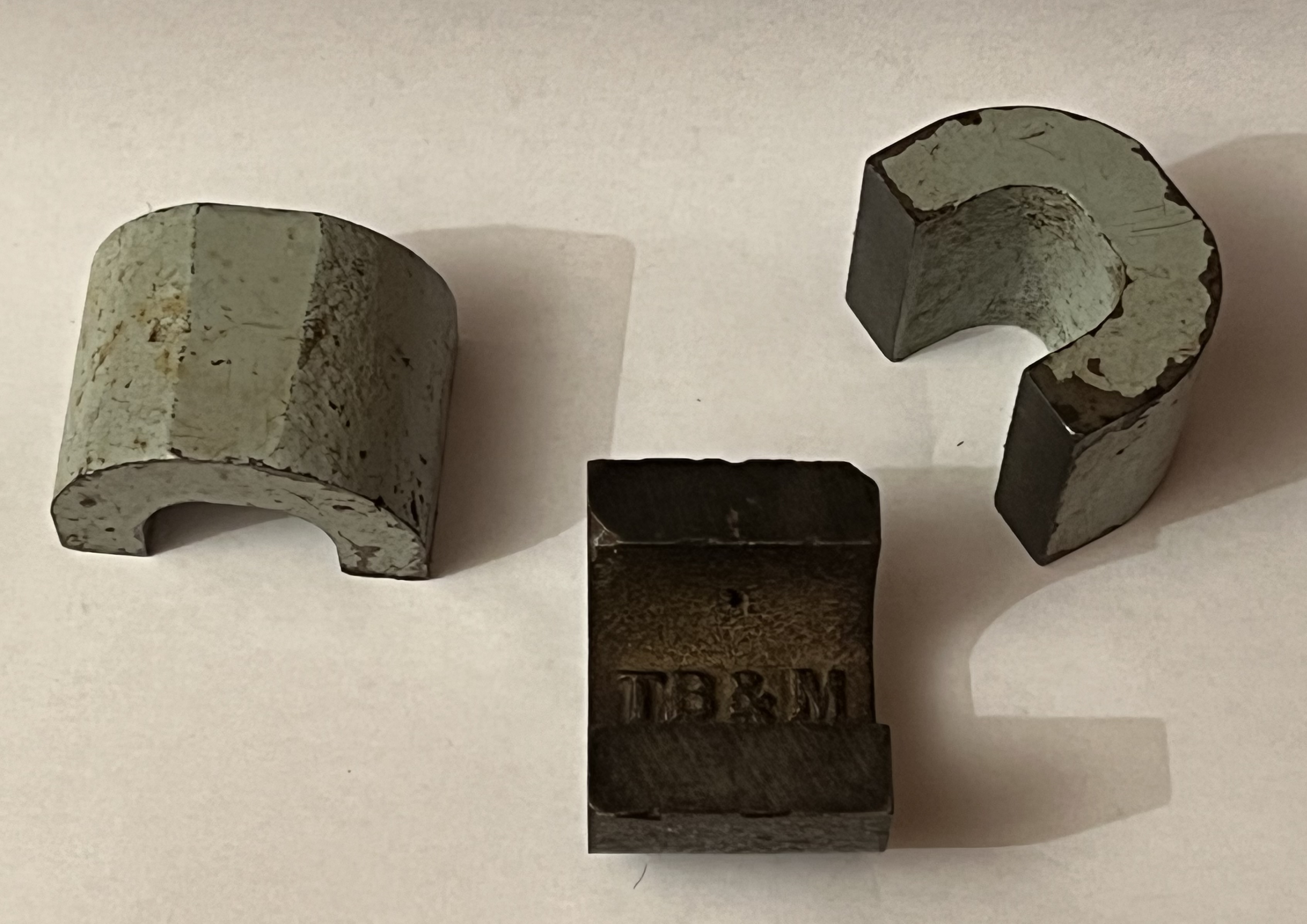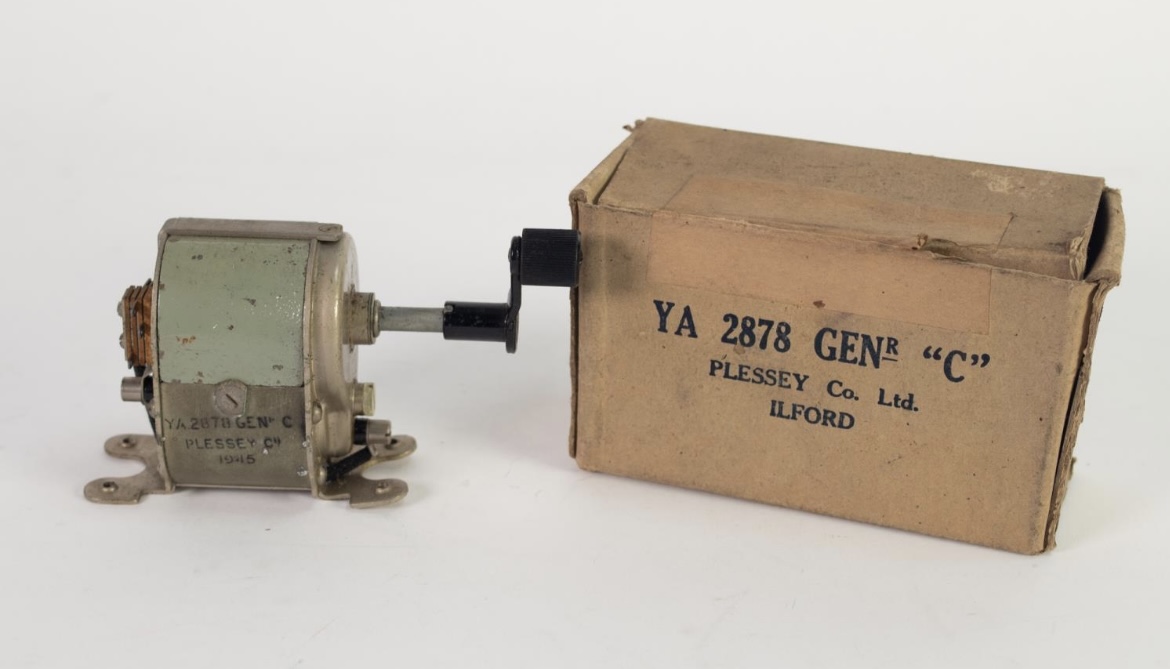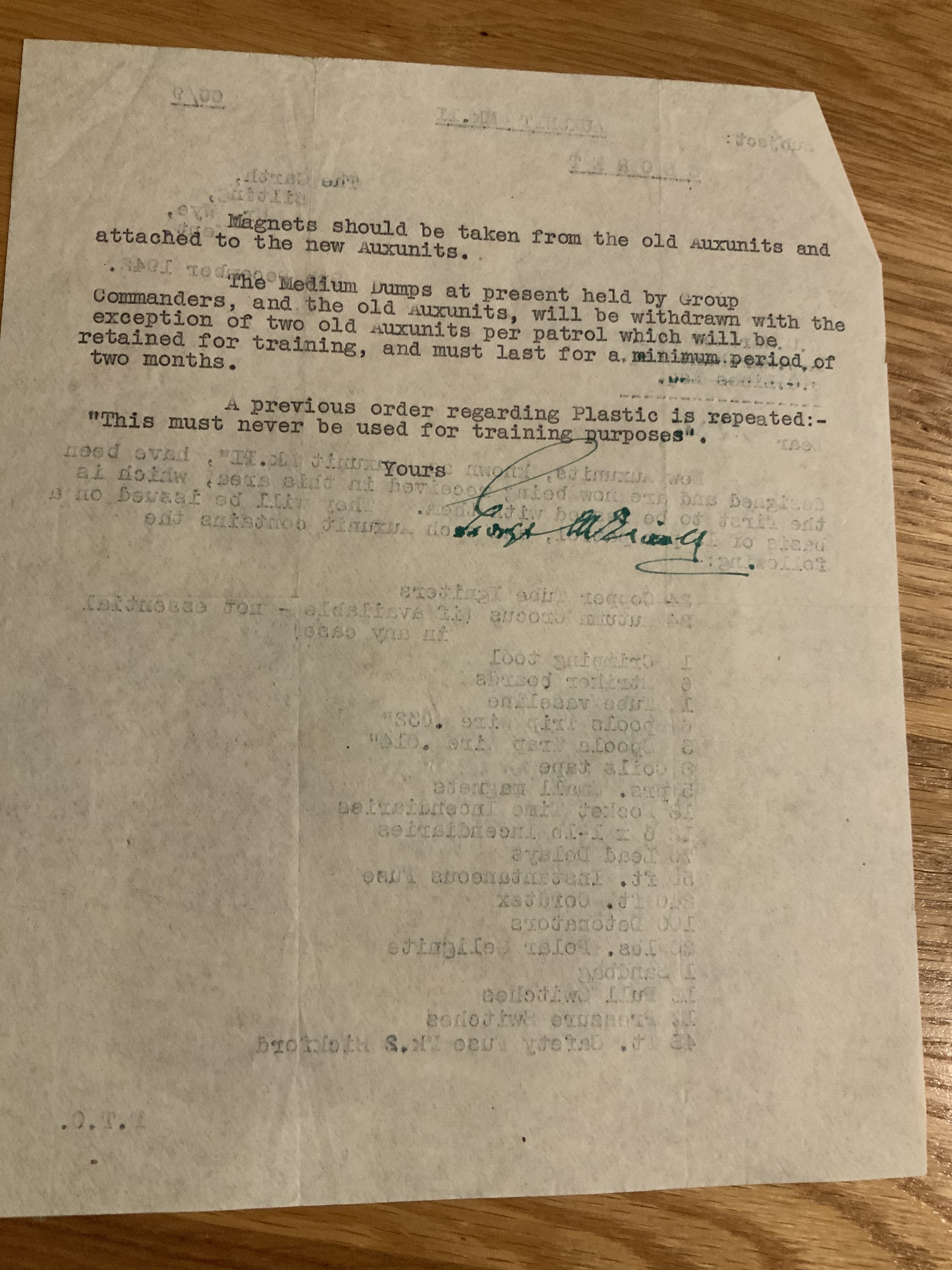Magnets were issued to allow an explosive charge to be attached easily to a metal target such as an armoured vehicle, lorry fuel tank, railway engine, aircraft or heavy machinery.
Auxiliary Units documents refer to both Magnets (large) and Magnets (small). The large magnets are first mentioned as part of Large Dumps issued to the Home Defence Organisation and to early Auxiliary Units. The Large Dump included 16 Large Magnets in 2 tins 4.1 cm (1 5/8”) high, each with eight magnets. The Small Dump had just 4 as part of larger tin of equipment. Kent Auxilier Dick Body’s list of the contents of the subsequent Aux Units packs includes 4 large magnets. When first issued in Kent at the end of 1942, the Aux Units Mark II packs contained 5 pairs of small magnets. 1944 dated documents indicate that these packs might contain either large or small magnets.
Magnets were a common item to be retained by Patrol members and examples survive from Dorset, Somerset, Northumberland, Aberdeenshire and Fife. All appear identical in size and shape. Some are painted a light green colour, others being blackened (rather than painted). They measure 52mm (2”) across the two poles and are 40mm (1 ½”) wide and 35mm (1 3/8”) high. They weigh 300g (10.5 ounces).
The same type of magnet appears in a film made of SOE explosives training. Two magnets are used with a mock charge of plasticine and a time pencil in order to sabotage a car. The demonstration has the saboteur duck behind the moving vehicle to attach the magnets on to the petrol tank and roll away. This was filmed at Brickendonbury House, SOE Station XVII. A list of supplies dropped to the BCRA (French Military Intelligence) includes magnets of the same weight and includes their SOE catalogue code (34) describing them as Magnets (Large). There is another type of magnet in the SOE catalogue (D 108) which are smaller but the catalogue entry lists these only as Magnets, rather than Magnets (Small). These magnets are the same type used on the type 6 Limpet mine, associated holdfast and variant limpet mines and are dealt with in a separate entry.
The Magnets (Large) were identical to those used in the hand cranked magneto of the F set Field Telephone. They are contained within the type No. 26A Magneto YA2878. Those within the F sets are all painted pale green and comparison between these and magnets retained by Auxiliers show them to be identical. They are alinco magnets, made from an aluminium (Ai), nickel (Ni) and cobalt(Co) alloy. Discovered in the 1930s it was the first alloy to create truly permanent magnets.
A magnet identical in size to the Magnets (Large) type appeared for sale on eBay in 2022. This was marked TB&M on the underside of the arch. These are the initials of Turton Brothers and Mathews Limited of Sheffield. In 1937 an advertisement states that they are Admiralty, War Office and Air Board List suppliers showing they were a regular government supplier. Manufacturers of magnet steels and permanent magnets among many other tools and steels, TB&M being noted to be their registered trade mark. This suggests they manufactured the Magnets (Large), though most likely this specific magnet is of post war commercial manufacture for a different telephone magneto. There may have been multiple manufacturers.
The Second Coleshill Shield Competition included an event where the Auxilier was given a numbered magnet to place on a guarded target in a night attack. Trip wires were set around the target and triggering one caused a 10 point penalty. Successfully placing a magnet earned 10 points, and get away unnoticed another 10 points.
Chris Perry
SOE sabotage with magnets colour film
HDO Large Dump contents lists CAB 240/241
Aux Units Mk II contents list WO 199/937
Dick Body collection
Gardner papers via N Bonney and B Barbour
BRCA supplies list (via Pascal Douvin)
SOE Catalogue of Special Devices and Supplies 1945, reproduced in Secret Agents Handbook of Special Devices, PRO, 2000
John Cameron and members of the Behind the Lines – SOE and the Clandestine War Facebook Group https://www.facebook.com/groups/1356920787776176
Russell Barnes on Flickr https://www.flickr.com/photos/russell_w_b/3995908243




